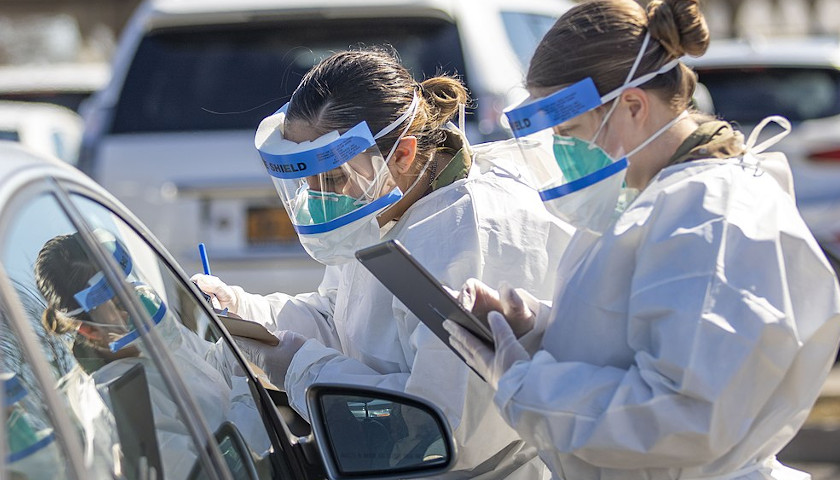How many people have tested negative for the coronavirus in Ohio? That’s on a need to know basis, and Gov. Mike DeWine has decided you don’t need to know.
DeWine joins Maryland Gov. Larry Hogan as the only two governors in the country who are actively defying a new federal law that requires all states to report “aggregate” coronavirus testing results.
Based on data reported from the other 48 states that are complying with the law, there is a wide variation in the percentage of those who take the coronavirus test who test positive.
New York State, which is one of the top three states in the country for the number of coronavirus (COVID-19) confirmed cases and deaths, has one of the highest rates. In the Empire State, 22 percent of people who took the test were positive, according to The COVID Tracking Project, so residents there at least know what they’re facing.
In contrast, only 2.9 percent of those who took the coronavirus test in Minnesota have tested positive.
Nationwide, the rate is about 12 percent.
Variations in this rate by state provides important clues about the burden of the disease, the CDC told The Ohio Star on Friday.
Due to decisions by Gov. Mike DeWine and Ohio Department of Health (OHD) Director Amy Acton, no one knows where Ohio fits in the spectrum of test results.
DeWine and Acton took dramatic action like closing restaurants and moving the date of the primary even as on Monday the state stopped reporting negative tests, The Ohio Star reported.
The COVID Tracking Project for Ohio continues to show the positive cases but the negatives were cut off after Monday.
Despite DeWine’s and Acton’s dramatic moves, Ohio has lagged behind every other state in the country in reporting the number of negative coronavirus tests in the state.
The Center for Disease Control (CDC) said Thursday that every state must report aggregated data of coronavirus testing to it.
The CDC’s authority comes from the Families First Coronavirus Response Act, which became law on Wednesday.
Section 1702 of that law makes it absolutely clear that states are required to provide “aggregated data on testing and results from State and local public health departments.” Aggregated data means complete and comprehensive test results, including both positive and negative results:
States and local governments receiving funds or assistance pursuant to this division shall ensure the respective State Emergency Operations Center receives regular and real-time reporting on aggregated data on testing and results from State and local public health departments, as determined by the Director of the Centers for Disease Control and Prevention, and that such data is transmitted to the Centers for Disease Control and Prevention.
Currently, ODH only shows the number of confirmed cases, number of counties in Ohio with a case and the number of hospitalizations.
A source at one county public health department told The Star that on last Saturday, they were told to stop reporting negative test data.
Last week, Acton and DeWine said they were operating as if 100,000 Ohioans had the virus, although Acton admitted she was “guesstimating.”
“I am not saying there are absolutely for certain 100,000 people,” Dr. Amy Acton, the director of the Ohio Department of Health, said at a press conference Friday. “I’m saying I’m guesstimating. If I’m guesstimating community spread, that’s my best number.”
Acton raised eyebrows Thursday when she said that because there is community spread of coronavirus in Ohio, at least 1% of residents in the state are likely to have the virus.
– – –
Jason M. Reynolds has more than 20 years’ experience as a journalist at outlets of all sizes.
Photo “Coronavirus Testing” by New York National Guard. CC BY 2.0.





